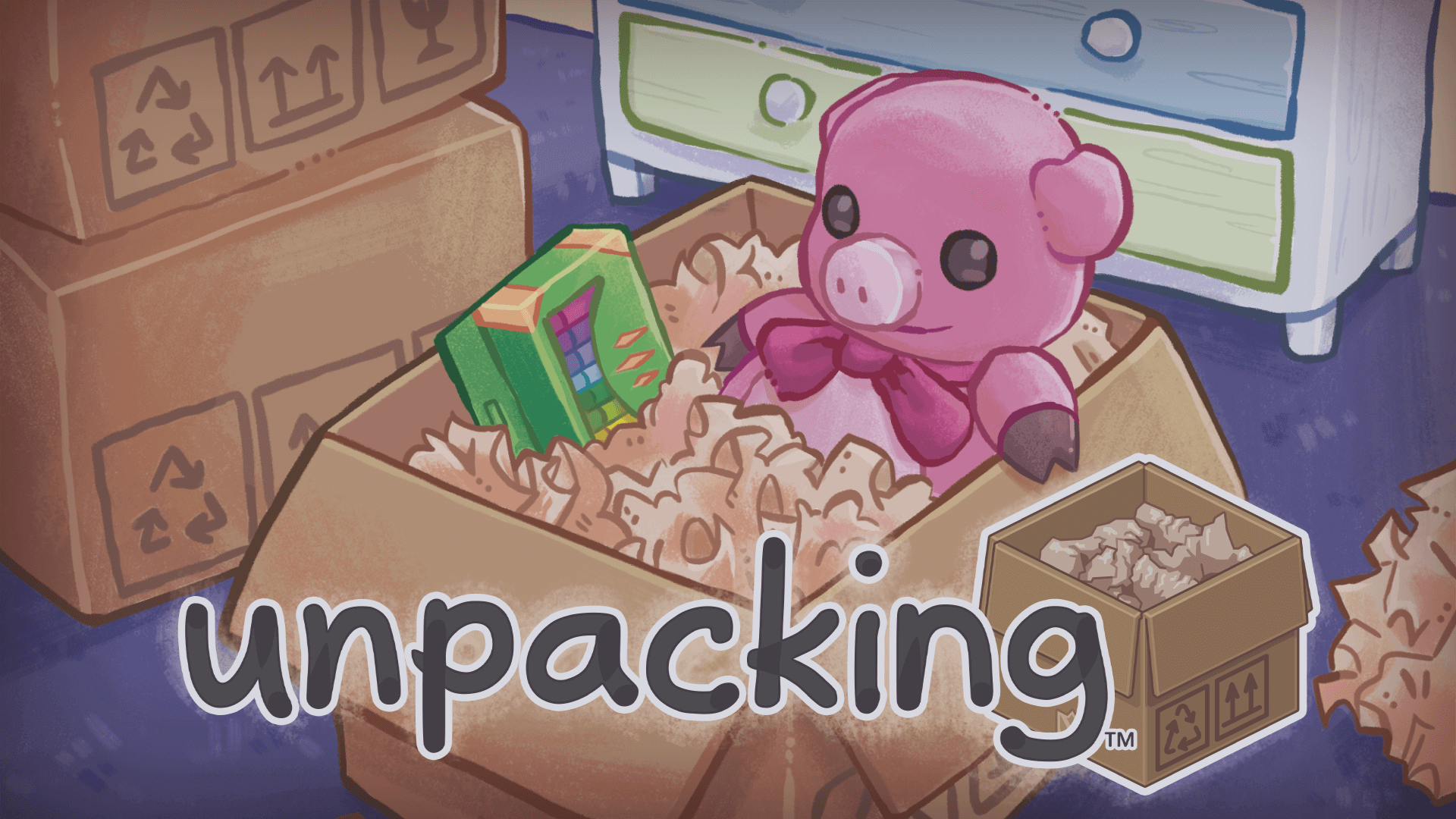Unpacking (2021)
Unpacking is not your typical video game. Rather than high scores or boss battles, the game delivers a meditative experience built around one of the most common yet intimate human activities: moving into a new home.
Developed by Witch Beam, this award-winning indie game invites players to slowly and deliberately unpack the belongings of an unseen female protagonist, tracing the arc of her life across two decades.
The gameplay is structured around a series of key life moments, each represented by a specific year: 1997, 2004, 2007, 2010, 2012, 2013, 2015, and 2018. Each of these years serves as the title of a stage, reflecting the period in which that particular move takes place. The narrative unfolds not through dialogue or traditional storytelling but through the objects the player unpacks and arranges. Each new living space offers a window into the evolving life, relationships, career, interests, and emotional world of the central character—who remains unnamed throughout the game, making her story all the more universal and relatable.
What makes Unpacking so special is its approach to storytelling. Rather than using cutscenes, journal entries, or narration, the game employs environmental storytelling—revealing the protagonist’s life story through the things she owns and the places she chooses (or is forced) to live. Every sticker-covered box opened, every item placed on a shelf or tucked away in a drawer, contributes to a larger emotional narrative.
In each stage, players are tasked with unpacking moving boxes filled with personal belongings. These items must then be thoughtfully arranged in the protagonist’s new living space. The environments range from a childhood bedroom in 1997 to a shared apartment with roommates, a cramped couple's home, and eventually, independent living in more personalized and refined spaces. By 2018, the story has come full circle, culminating in a home that reflects a full, hard-earned sense of identity and stability.
This simple mechanic—unpacking boxes—is deceptively rich. Players begin to notice the patterns and shifts in the protagonist's life. A stuffed animal from childhood reappears in each new dwelling, though its place in the home changes, symbolizing shifting emotional attachments. Books, kitchen tools, and even office supplies suggest career changes and growing confidence. Some items disappear entirely, hinting at emotional breakups, losses, or evolving values.
Each stage offers a glimpse into a particular phase of the protagonist’s life. The first level, set in 1997, is a child’s room filled with toys, books, and school supplies. It’s cozy and colorful, evoking a time of innocence and imagination. By 2004, the protagonist is moving into a college dorm. The items she brings now include textbooks, art supplies, and a personal computer—markers of intellectual growth and independence.
In 2007, the game hints at her first post-college apartment, perhaps shared with roommates. The clutter is more pronounced, space is tight, and compromises are evident in how possessions must be arranged. By 2010, she’s moved in with a romantic partner. The apartment is clearly not her own—it feels like she's fitting her life around someone else’s space, and some of her items, heartbreakingly, no longer have a place. Players often notice, for example, that certain personal things must be tucked away in a closet or left out of sight in this level.
But as time passes, there are signs of reclaiming identity. The 2012 and 2013 stages reflect personal setbacks and then growth—perhaps a breakup, a new job, a change of city. The protagonist moves into smaller spaces again, but now there’s more autonomy, more signs of creative and personal fulfillment. By 2015, there’s a feeling of stability. Items are familiar, but the spaces feel warmer and more expressive.
Finally, in 2018, the story culminates in a home that feels wholly hers. The belongings are no longer trying to fit awkwardly into unfamiliar environments. Instead, everything feels aligned. There's room for her art, her books, her kitchen tools, her passions—and even for new additions, possibly signifying a growing family or stable relationship. The sense of narrative closure is profound, even though no single word is spoken.
Across all eight stages, players will interact with a total of 35 rooms, each meticulously designed to reflect the time period and the protagonist’s changing circumstances. These rooms include bedrooms, kitchens, bathrooms, living rooms, home offices, and even shared spaces like dormitories and couple’s apartments. The layout of each space—how big or small it is, how decorated or plain, how many rooms it has—contributes to the storytelling.
Every item has a story, and often, a specific place it belongs. While most objects can be freely placed, some items must be put in certain locations to complete the stage. For example, a toothbrush needs to be in the bathroom, and a kettle must go in the kitchen. These rules gently guide the player toward organizing each space in a functional and believable way while still allowing for creative freedom.
Sometimes, the game challenges the player’s assumptions. What looks like a random object may turn out to be deeply meaningful. A framed photo tucked in a drawer could suggest a painful breakup. A diploma finally hung on the wall may represent long-awaited pride in one’s accomplishments. The seemingly mundane act of arranging cutlery or stacking books becomes a quiet meditation on what we carry with us through life, both physically and emotionally.
#WeTakeAStand #OpinYon #OpinYonNews #Unpacking #GameReview
